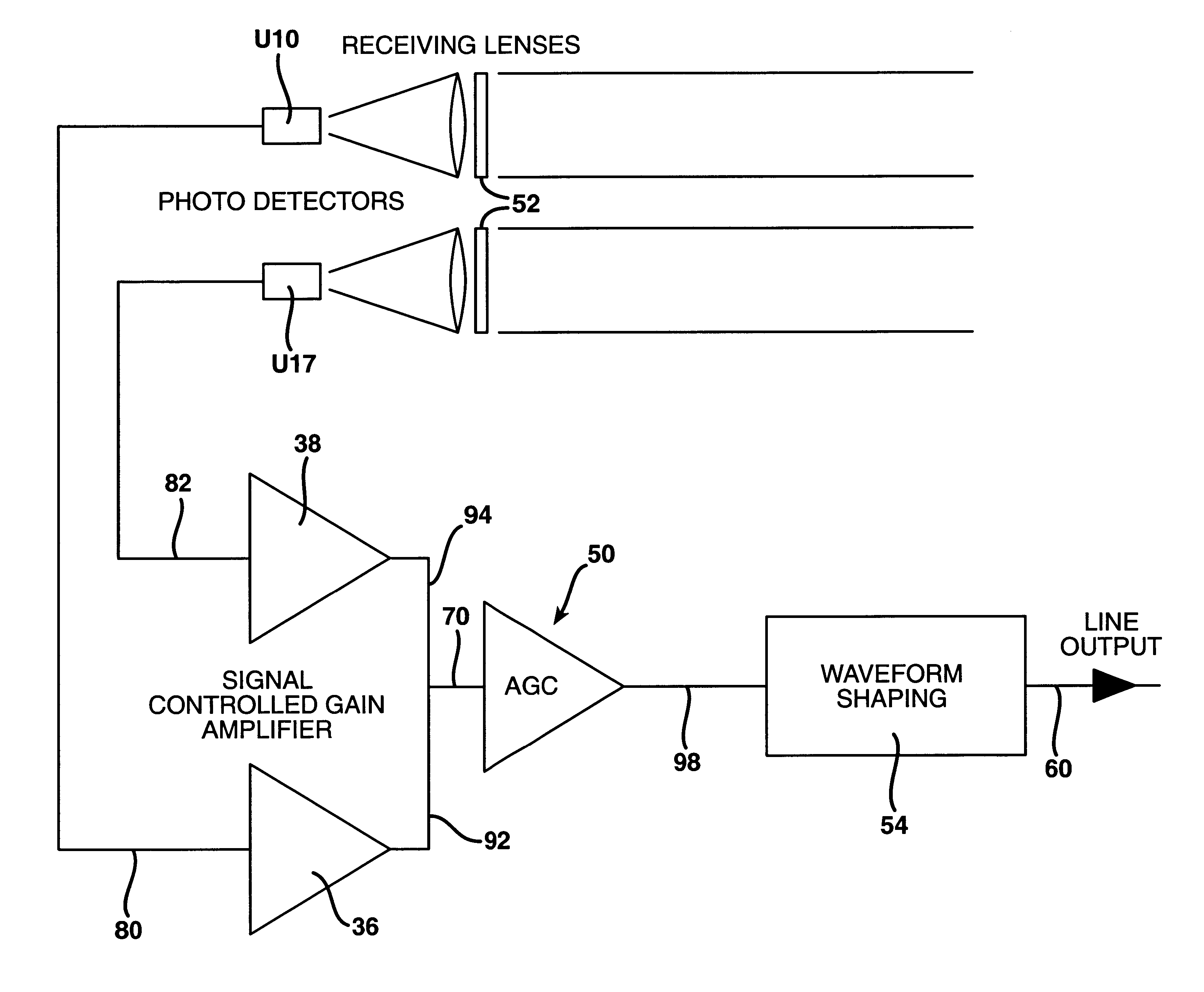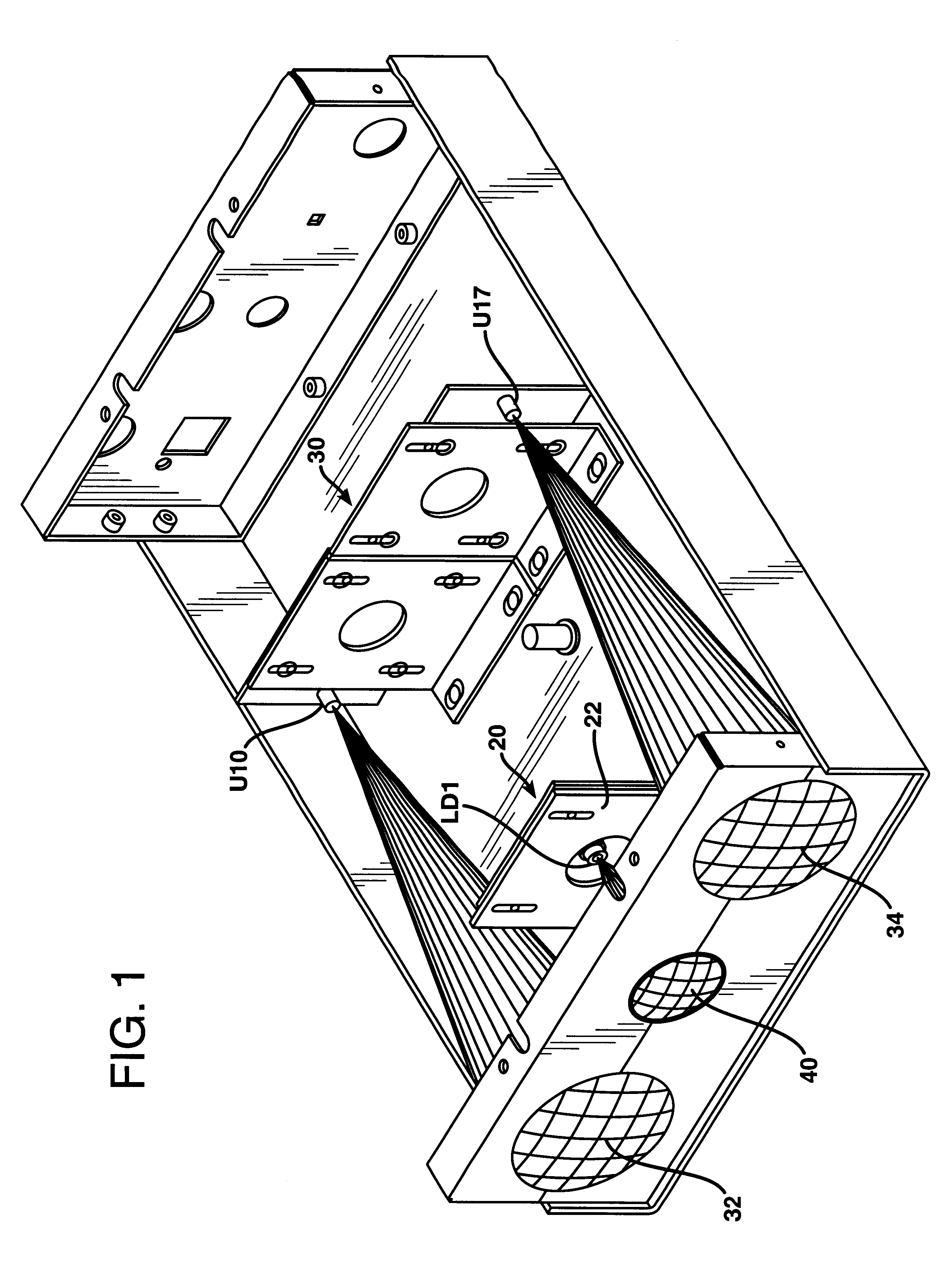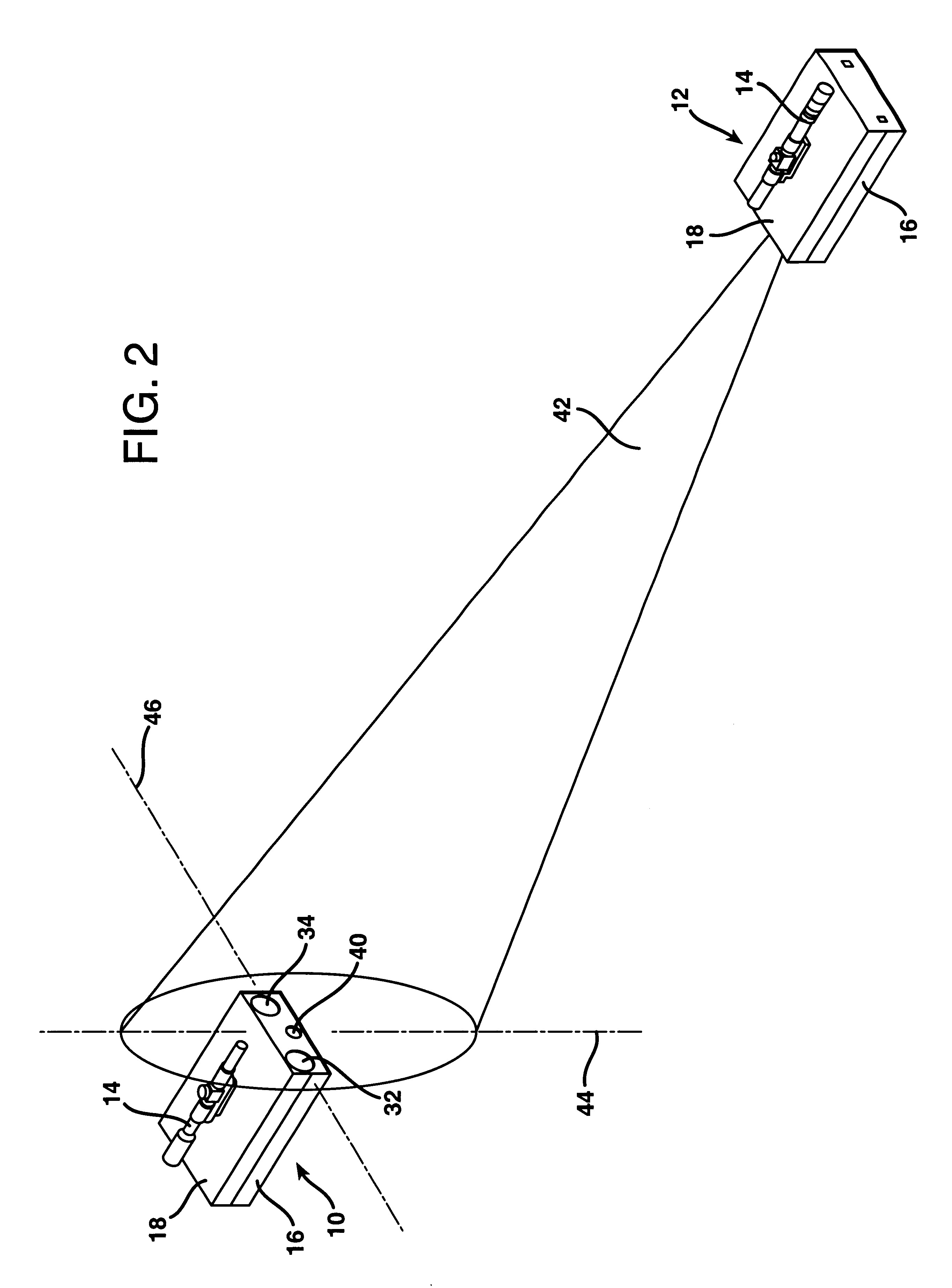Atmospheric turbulence resistant open-air optical communication system
a technology of optical communication system and atmospheric turbulence, which is applied in the direction of transmission monitoring, transmission monitoring/testing/fault-measurement system, electrical equipment, etc., can solve the problems of loss of signal strength, hampered development of such systems, and inability to solve the basic limitations imposed by the laws of physics
- Summary
- Abstract
- Description
- Claims
- Application Information
AI Technical Summary
Benefits of technology
Problems solved by technology
Method used
Image
Examples
Embodiment Construction
As illustrated in FIG. 2, a full duplex open-air optical communication system according to the invention may be constructed utilizing a pair of optical transceiver units 10 and 12. The transceivers 10 and 12 are identical in all respects and are positioned in optical combination to transmit and receive signals to and from each other. The electronic and optical components of the transceivers 10 and 12 are each housed within a weather-resistant case 16 having a cover 18 seated thereon in a weather-tight fashion. FIG. 1 illustrates one of the optical transceivers 10 or 12 with the cover 18 removed therefrom.
The physical dimensions of the case 16 of each of the transceivers 10 and 12 is one hundred millimeters in height, one hundred eighty millimeters in width, and two hundred ninety millimeters in depth. The system employs a 12-volt DC nominal power supply and may be operated between 0.degree. C. to 50.degree. C. Each of the transceivers 10 and 12 weighs 1.5 kg.
As illustrated in FIG. 1...
PUM
 Login to View More
Login to View More Abstract
Description
Claims
Application Information
 Login to View More
Login to View More - R&D
- Intellectual Property
- Life Sciences
- Materials
- Tech Scout
- Unparalleled Data Quality
- Higher Quality Content
- 60% Fewer Hallucinations
Browse by: Latest US Patents, China's latest patents, Technical Efficacy Thesaurus, Application Domain, Technology Topic, Popular Technical Reports.
© 2025 PatSnap. All rights reserved.Legal|Privacy policy|Modern Slavery Act Transparency Statement|Sitemap|About US| Contact US: help@patsnap.com



